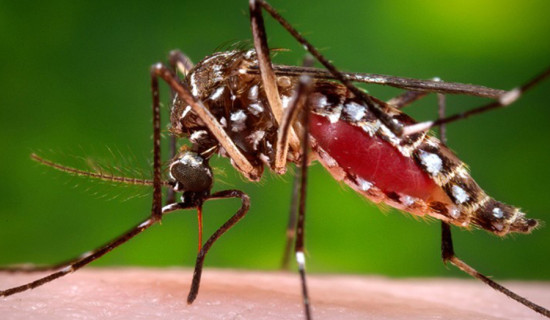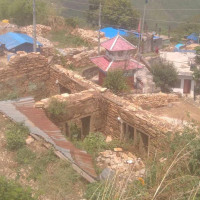- Sunday, 20 July 2025
Teenagers fall prey to cyberbullying, harassment in lack of safety, remedy
By Arpana Adhikari,Kathmandu, July 20: One freezing evening last winter, a teenage pushed through the doors of the Cyber Bureau Bhotahiti, Kathmandu. She was trembling, partly from cold, but mostly from fear. The multiple cuts on her wrists signaled an emergency beyond routine cyber complaints.
She explained officials of the bureau how a Bangladeshi man had befriended her on Facebook, offering the attention she craved in her family. After gaining her trust, he persuaded her to send private images.
What began as a secret exchange turned into humiliation as he circulated those images among classmates, then relatives. Blamed and beaten at home instead of being comforted, she finally sought police help. Working with Bangladeshi counterparts, the Bureau helped trace and jail the perpetrator, said Spokesperson of the Bureau Deepak Awasthi.
Ashim (name changed) of Kalanki, was just 15 years when he faced a similar trap, this time a predator acting as an attractive girl on Facebook. After gaining his trust and exchanging nude images, the impostor threatened exposure unless he sent money.
His mother, Sarala (name changed), a school teacher by profession, noticed her once-bright son becoming socially withdrawn, losing weight and struggling at school during the crucial SEE year.
The truth came to light when she discovered a threatening notification on his son’s iPad one day. Despite her desire to report the crime, Ashim begged her not to involve the police. Though his mother intervened and deactivated the Facebook account, two years later he is still in therapy for severe anxiety.
“We realised the profile with the beautiful girl’s picture was actually a man from India trying to blackmail and extort money,” said Sarala. “Fortunately, I intervened in time and none of our friends or relatives have claimed to have received my son’s private photos.”
Such cases reflect a rising pattern of online child abuse in Nepal’s rapidly expanding digital sphere. The speedy growth of internet access in Nepal offers children new learning and social opportunities but also exposes them to rising risks like cyberbullying, exploitation, identity theft, and harmful content.
Cyber Bureau data shows 635 child abuse-related complaints (253 boys and 382 girls) among 16,096 cases were reported in the fiscal year 2023/24. It shows a sharp increase from 176 child abuse cases (46 boys and 130 girls) out of 6,782 cases reported in the previous year.
However, Awasthi noted that these figures reflect only reported cases, many go unreported due to fear of social stigma, lack of awareness, hesitation to involve with law enforcement, or fear of further harassment from family and dependency on adults to file complaints.
A recent survey conducted by World Vision International Nepal among 2,259 students of grade 8-12 across all seven provinces found daily internet use by nearly half of both girls and boys. More than half, 54.15 per cent, said they go online primarily to build friendships.
Over a 30 per cent lacked awareness on protecting personal data, almost half ignored basic security updates, whereas 13 per cent reported facing online harassment and 10 per cent reported account hacking. Similarly, the report shows online abuse risk was higher among children of government schools and rural municipalities.
Psychological impact and policy gap
Experts warn online child abuse can trigger anxiety, sleep and appetite changes, declining concentration, irregular school attendance and social withdrawal.
Over time, these symptoms may erode self-esteem and academic performance, said Sunil Hakaju Shrestha of World Vision International Nepal.
In more severe cases, persistent stress can trigger depressive tendencies or panic symptoms, when victims feel trapped by threats of exposure.
Awasthi echoed parents and guardians hold a decisive position in controlling children’s online behaviour.
Proactive involvement-setting age-appropriate boundaries, discussing consent and privacy, regularly checking-in about the new online contacts of children and normalizing ‘tell me if something feels wrong’ can help reduce secrecy and prevent situation from getting out of control, he added.
Awasthi said there were technical measures like keyword blocking, URL/IP filtering, and AI-based content moderation can help. However, these alone are not enough, so building relational trust with children remains the strongest safeguard.
Child rights experts criticize a persistent gap between Nepal’s child protection policies and their execution, noting digital safety for children is still rarely prioritized in local budgets.
Lack of public awareness about existing laws, reporting channels and how to preserve digital evidence keeps many cases hidden, lowering reporting rates and letting offenders reoffend, said Shrestha.
Shrestha noted additional legal hurdles, especially a short 35‑day statute of limitations that can apply to certain online offenses under the Electronic Transactions Act (ETA), do not reflect the delayed disclosure common when victims need months to process fear and shame.
However, Awasthi clarifies, “Where child‑specific laws apply (child sexual exploitation or related offenses) this limitation may not bar complaints, but ETA provisions can still constrain other cases.”
He added that a draft amendment to the cyber law is under discussion and efforts are underway to remove the restrictive clause.
Under the ETA, penalties reach up to Rs 100,000 and/or five years imprisonment, with harsher sentences for child exploitation under the Criminal Code. Considering the growing threat of online child abuse, there is an urgent need for vigilant parenting, open communication with children and stronger cyber safety measures to protect young people before it’s too late.
















